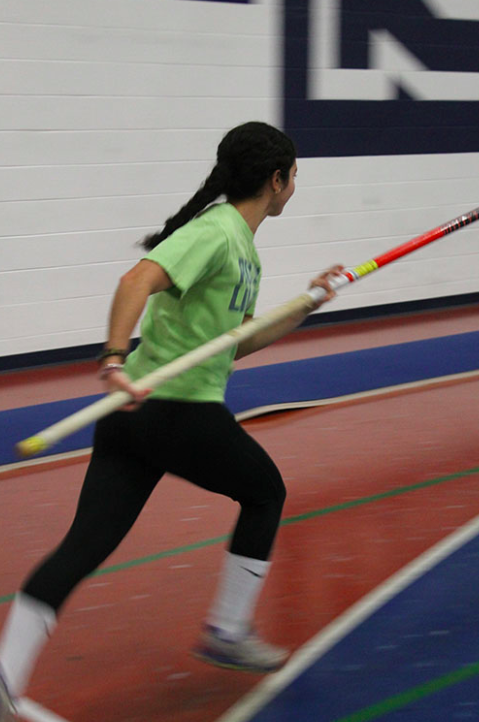Outside the lines of the track and beyond the stadium, adrenaline-fueled field events exist, but are given little recognition.
“Field events are a lot more technical than running,” captain Bridget Van Dorsten ’15 said. “In a field event such as the high jump, there are so many different components of the jump that one has to master in order to actually clear the bar.”
Van Dorsten, who competes in both triple jump and high jump, only gained recognition her sophomore year when she won states. Her triple jump record is 35 feet and two inches, and her high jump record is 5 feet and four inches, which is equivalent to the average height of a woman in the United States.
“Jumping requires a lot of form. You need to have very strong lower body strength and be very flexible,” high jumper TJ Bravo ’15 said.
Pole vault is another field event where the athlete attempts to jump over a high bar, but this event requires the use of a long, flexible pole.
“Personally, for me, it’s hard to get over fear. Pole vaulting is both physically demanding and mentally demanding,” captain Sophia Corde ’15 said. “You have to fling yourself upside down up pretty high, and then try and turn yourself over a bar. There are many potential dangers, and I often psych myself out, which is a big thing that I struggle with in my vault.”
And it is with good reason that a pole vaulter has fear. According to the St. Petersburg’s Times, pole vaulting has the highest death rate of any sport in the entire country.
In addition to jumping events, track and field also has throwing events. An athlete who participates in these events focuses on improving flexibility, strengthening the core and completing explosive lifts.
“There are so many times where I tell people I throw shot put, and no one knows what that is,” Anika Bartie ’17 said. “Every squat I do I have to say to myself, ‘One more,’ even if it’s only the second rep. A throwing event is mentally challenging. You have to do so many things perfectly in such a short amount of time. If you mess one thing up, you mess up the entire thing.”
However, the well-known track events are the running events. A running event lasts anywhere from six seconds to 10 minutes, while field events can be as long as three hours.
Tri-captain and long distance runner Oliver Hickson ’15 believes running events are well know at Staples because “track meets in our area, especially at Staples with our distance-running oriented program, has shifted to the running events. As a result, the fields athletes do not always get as much recognition as they deserve.”
However, there are people like Cari Moore, a coach for land field events, who doesn’t think they get overlooked.
“I think any event that has an outstanding performer in it will be recognized. Here at Staples we are lucky enough to have outstanding athletes in both running and field events,” Moore said. “It is not as simple as just throwing, jumping or running. The challenges for all the events, running or field, are that you have to understand the demand that is required in order for you to have a chance at success,” McCray added.














































